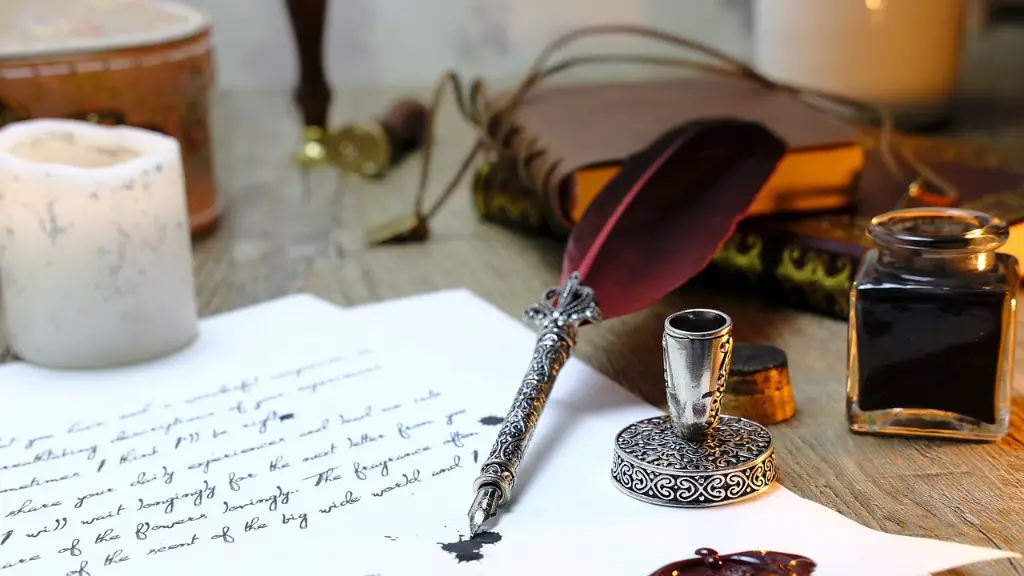What is Syntax?
Syntax is the organization of words in a sentence. When used in a poetic context, syntax patterns or styles can be used to reinforce meaning orcreate a specific sound. Poets also employ syntax to determine defining characteristics, such as word order, rhythm, and length of line, as well as to evoke emotion. While it is not necessary to possess an in depth knowledge in order to appreciate literature, understanding how syntax affects the flow of a poem can make the experience more meaningful.
What is Poetry?
Poetry is an art form which dates back to ancient times and is written in verse or meter. It has evolved significantly over the centuries, with poets lending their own style, imaginations, and insights to their work. There are various types of poetry available in literature today, such as narrative, lyric, epics, dramas, haiku, and sonnets.
Syntax in Poetry
Syntax plays a significant role in poetic expression. From the arrangement of words to the form and structure of the poem, syntax adds value and meaning to the work. For example,words that are close together grammatically can add emphasis or clarity, while words that are far apart grammatically can create a more relaxed or open interpretation. Additionally, by manipulating words and syntax, poets can create rhythm that helps to convey the essence of the poem.
The Benefits of Poetic Syntax
One of the main advantages of using syntax in poetry is the ability to cause an emotional reaction from the reader. It can evoke feelings of joy, anger, sorrow, and nostalgia, adding a layer of depth to the poem. Syntax also helps to shape the overall experience of the poem and can help evoke deeper insights and understanding. By emphasizing key concepts in the text, poets can better convey the message of the work.
Tools for Writing Poetry
In order to effectively use syntax in poetry, poets should have a good understanding of the structure and mechanics of poetry. This includes familiarity with literary terms, such as meter, stanza, rhyme, and alliteration. Moreover, poets should have an expansive vocabulary and an understanding of how to create balanced and readable lines. Additionally, poets need to be aware of the sound and flow of their work, as well as its tone and atmosphere.
The Importance of Syntax in Poetry
Syntax is an essential element of poetry, and its proper use can help to bring a poem to life. It can affect the overall tone, emotion and message of the poem. Additionally, syntax can help to convey and emphasize key concepts, such as sound, rhythm, philosophy, or theme. Moreover, poetic syntax can bring order to a poem and make it easier to read as each line follows an established formula. By understanding how to use syntax in a poem, writers can create works of art that have the power to move and inspire.
The Use of Figurative Language
Syntax can be used to create figurative language, a type of writing which employs metaphors and analogies to communicate an idea. This style of writing adds an imaginative element to the poem and helps to create a deeper emotional connection with the reader. By incorporating figurative language into their work, poets can better express their thoughts, feelings, and desires.
The Value of Syntax in Poetry
By understanding how to effectively use syntax in poetry, writers can craft meaningful and powerful works of literature by manipulating the structure and language of their poems. By understanding how syntax can impact the meaning, tone, and readability of a poem, poets can create works of art that express their thoughts and feelings in a meaningful and powerful way. Additionally, syntax can help to bring order and structure to the poem and make it easier to read and appreciate. Furthermore, understanding syntax can help readers gain insight into a poem, and it can also help them better appreciate its meaning and message.
The Use of Figures of Speech
Figures of speech, such as simile and metaphor, are powerful tools that can be used to create a more vivid, imaginative experience for the reader. Poets can use them to create a bridge between the poem and the reader’s life experiences, helping to make their work more relatable. Moreover, figures of speech can be used to further emphasize specific points or ideas within the poem, making it easier for the reader to understand and appreciate it.
Conclusion
Syntax is an essential component of poetry and its proper use is essential if a poet wants to create meaningful and powerful works of literature. By understanding how syntax can affect the meaning, tone and flow of a poem, poets can create works of art that are easier to read and appreciate. Additionally, syntax can help poets to evoke emotion, further emphasize key elements, and create vivid and imaginative imagery. Ultimately, with a good understanding of syntax, poets can create works that move and inspire readers.


